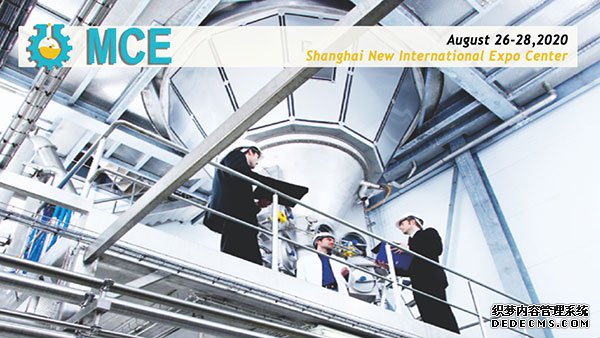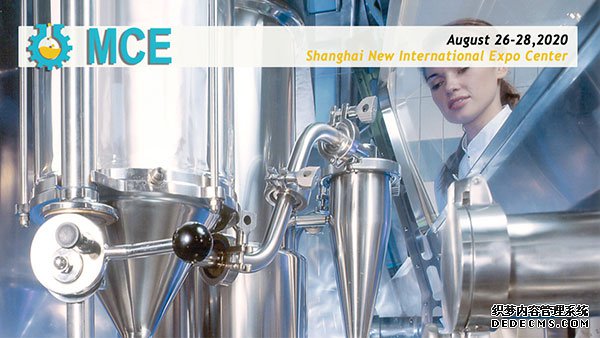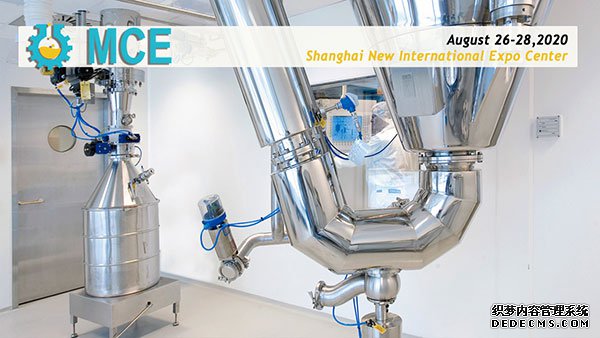

Spray drying is a method used to dry materials, which can dry solutions, emulsions, and suspensions into powder or granular products, eliminating the need for evaporation and pulverization, and is widely used in the pharmaceutical industry. Industry data shows that in 2017, the global market size of spray dryers was 1.068 billion US dollars, which has steadily increased in recent years. According to analysis, the market is expected to reach 1.611 billion US dollars by the end of 2025. As a major manufacturing country of pharmaceutical machinery and equipment, China will also meet good opportunities while the global spray dryer market is blooming .

According to the type, spray dryer can be divided into three types: pressure, centrifugal and airflow.
The pressure type spray drying uses a high-pressure pump to pass the material through an atomizer (spray gun) at a pressure of 70 to 200 atmospheres, and aggregates into aerosol particles of 10 to 200 in direct contact with hot air for heat exchange,the drying process will be completed in time.
Centrifugal spray drying uses a disc that rotates at a high speed in the horizontal direction to give the solution a centrifugal force to spin it out at a high speed to form a film, filament or droplet. Due to the friction, obstruction and tear of air, it follows the disc. The tangential acceleration generated by the rotation and the radial acceleration generated by the centrifugal force form a spiral trajectory. After the liquid is ejected from the disc along this spiral, it is dispersed into tiny droplets along the tangential direction of the disc at an average speed. Movement, at the same time the droplet drops under the force of gravity. Because the sprayed particles are different in size, they also fly at different distances, so the particles that fall at different distances form a cylinder that is symmetrical about the center of the rotation axis. Centrifugal spray dryers are currently widely used in the pharmaceutical industry.

The working principle of air-flow spray drying is that the wet material enters the dryer at the same time as the heated natural air passes through the conveyor, and the two are fully mixed. Due to the large heat and mass exchange area, the purpose of evaporation and drying is achieved in a short time. The dried product is discharged from the cyclone, and a small part of the flying powder is recycled by the cyclone or bag filter. Therefore, the air-flow spray dryer shows the circular economy of resource utilization.
According to the different types of equipment, its advantages and disadvantages are also very obvious, so users need to choose a spray dryer according to their own needs in order to play its role. It is understood that with the increase of the requirements of the pharmaceutical industry, spray dryers are still facing further improvements and upgrades in terms of resource utilization, production efficiency, energy saving and environmental protection.

In the past, China's spray drying technology was relatively backward, production efficiency was low, and product quality and output were difficult to meet user requirements. With the development of science and technology in recent years, domestic spray drying technology has been significantly improved, which can meet the needs of some pharmaceutical companies. However, compared with foreign spray dryer equipment, China's technical level still needs to be improved.
The industry experts pointed out that the overall level of China's spray dryer industry is still lagging, most of which are caused by low-level repetitive production, including problems such as poor equipment manufacturing materials and poor processing technology.

At present, China's support policies for automation and intelligence continue to advance. Against this background, if the spray dryer equipment industry wants to reduce the gap with foreign countries, it can start to improve from the aspects of intelligent equipment, processing methods, and processing quality.